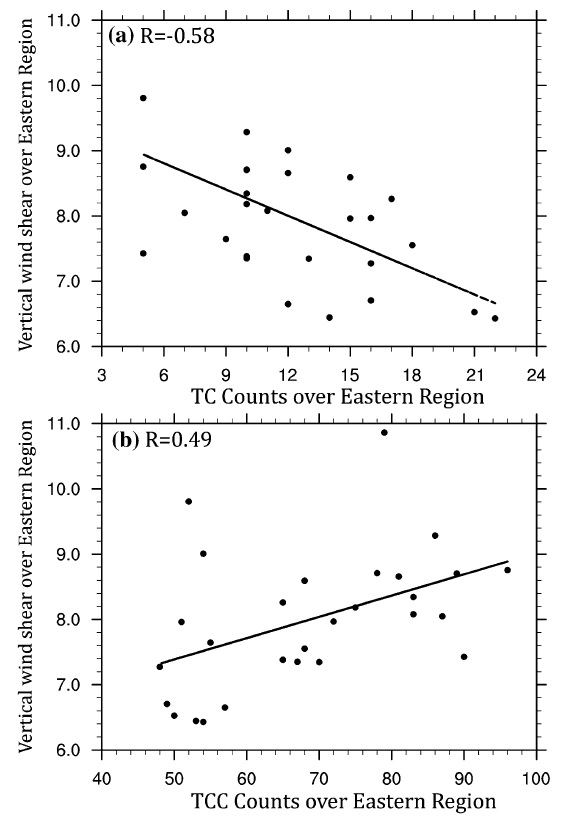Zhao, H., S. Chen, G. B. Raga, P. J. Klotzbach, : Recent decrease in genesis productivity of tropical cloud clusters over the Western North Pacific. Climate Dynamics, 52, 5819-5831 , https://doi.org/10.1007/s00382-018-4477-8
Key Points
Abstract
Tropical cloud clusters (TCCs) play a critical role in sustaining tropical large-scale systems and are traditionally viewed as precursors for tropical cyclone (TC) genesis. This study focuses on the decadal changes in genesis productivity (GP), e.g. the efficiency of TCCs developing into TCs, and shows a significant decrease in GP over the western North Pacific (WNP) basin since 1998, when a climate regime change occurred. The significant decrease in TC frequency and the significant increase in TCCs, especially over the eastern region of the WNP basin, have combined to result in a reduced GP since 1998. These changes are dependent on the combined changes in large-scale atmospheric-oceanic conditions over the WNP basin. A decadal change in vertical wind shear, especially over the eastern portion of the WNP basin, appears to be the most important contributor to the recent decrease in GP. Increased vertical wind shear suppresses TC genesis but enhances the frequency of TCCs. Secondary positive contributions to the recent decrease in GP are from local sea surface temperatures (SSTs) and low-level relative vorticity. These positive contributions to the recent decrease in GP are partly cancelled out by a negative contribution from enhanced mid-relative moisture. Changes in these large-scale conditions associated with the recent decrease in GP over the WNP basin since 1998 are closely related to the weakening monsoon circulation and the westward shift of the tropical upper-tropospheric trough over the WNP. This is likely related to the changes observed in tropical SST anomalies around the globe.
Key Figure
FIG. 5. Correlations of inter-annual boreal summer (July–October)(a) tropical cyclone (TC) counts and (b) tropical cloud cluster (TCC) counts of the western North Pacific basin with averaged vertical wind shear averaged over the eastern region [0°–30°N, 140°E–180°] during 1982–2009.
Acknowledgments
This research was jointly supported by the National Natural Science Foundation of China (Grant nos. 41675072, 41730961 and 41475091), the Natural Science Foundation of Jiangsu Province (Grants No. BK20181412), the QingLan Project of Jiangsu Province (R2017Q01) and the Priority Academic Program Development of Jiangsu Higher Education Institutions (PAPD). P. Klotzbach would like to acknowledge a grant from the G. Unger Vetlesen Foundation. The authors would like to thank the two anonymous reviewers for helpful comments that have significantly improved the manuscript.
